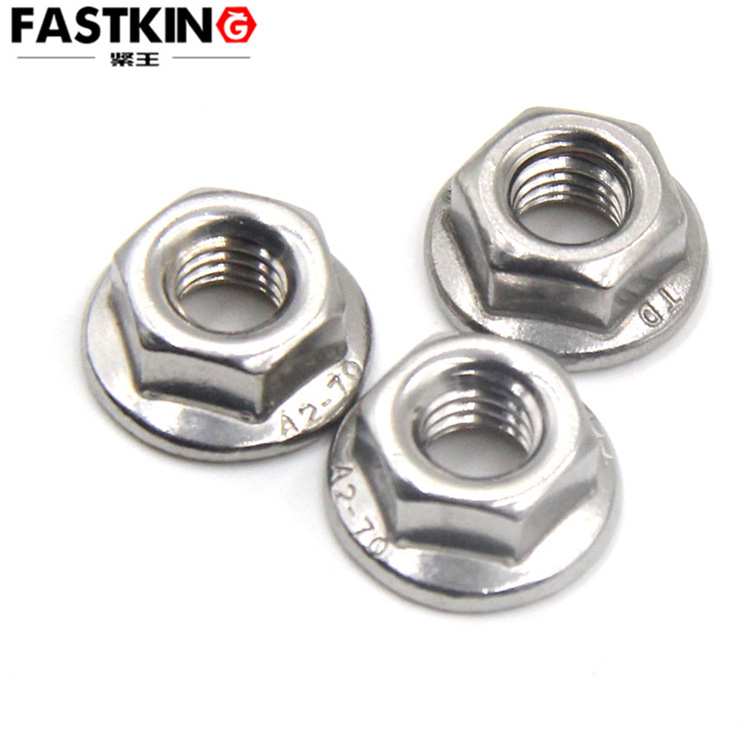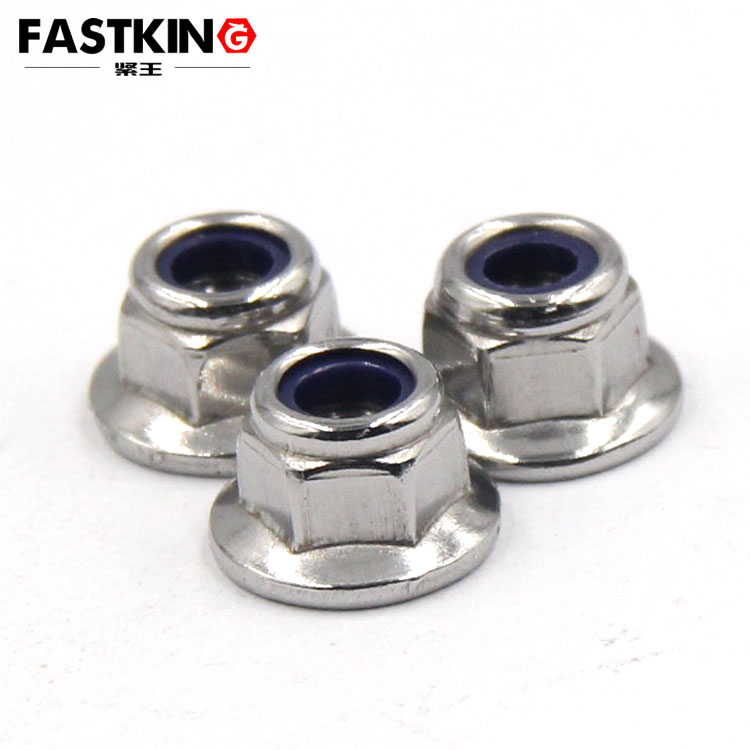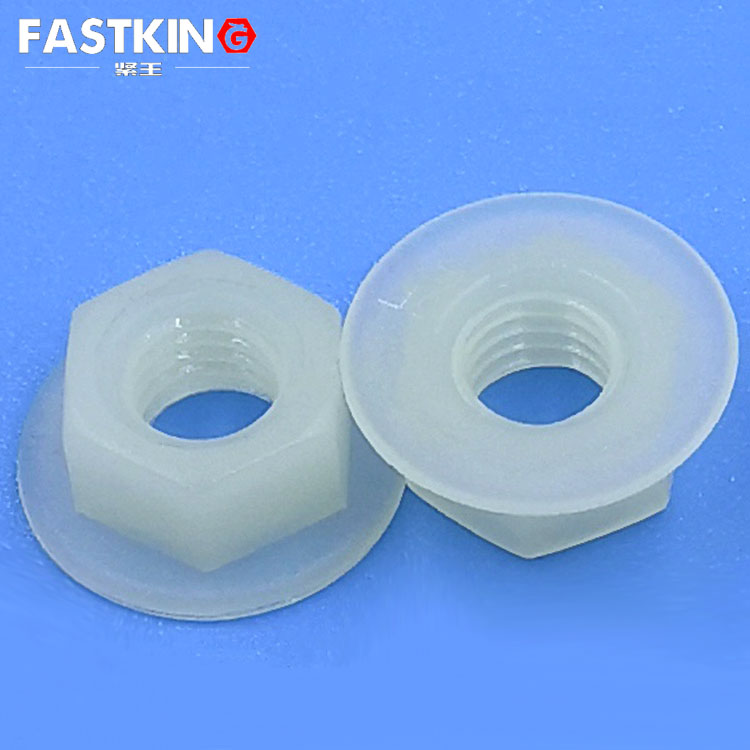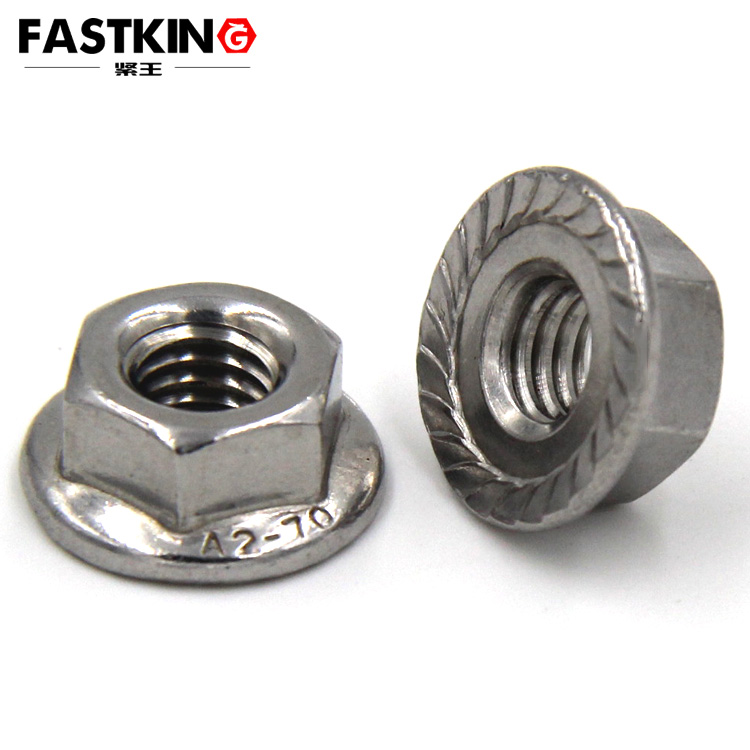- ZHUHAI JIALI HARDWARE CO.,LTD.
- +86-756-8586520
Flange hexagon nut-din6923
- Product description:Hexagon flange nut mainly includes nut body, one end of the nut body is fixed with flange surface, and the other end of the nut body is fixed with cap; because the cap is set on the nut body, it has g
Flange hexagon nut-din6923
Material: stainless steel 304316, grade 8.8 high strength and grade 12.9 high strength
It can also support non-standard customization.
I. DIN6923 Standard: Precise Specifications Ensuring Quality
DIN6923 is a core specification under the German Industrial Standards (DIN) for flange hexagon nuts. It defines strictly aspects such as the product's dimensional accuracy, mechanical properties, material requirements, and surface treatment. From the nominal diameter of the nut—covering common sizes ranging from M5 to M36—to thread accuracy (e.g., 6H class internal thread tolerance), and further to the outer diameter, thickness, and surface roughness of the flange, every parameter is assigned a clear numerical standard. For example, the standard stipulates that the edge of the flange must adopt a rounded design to avoid scratching the surface of the connected component during installation; at the same time, it puts forward specific requirements for the mechanical properties of the nut, such as hardness and tensile strength, to ensure that it can withstand long-term loads and vibrations. This standardized production system not only ensures the interchangeability of products from different manufacturers but also enables the DIN6923 flange hexagon nut to have a unified quality benchmark in the global market.
II. Structural Design: Balancing Stability and Convenience
The most notable advantage of the flange hexagon nut - DIN6923 lies in its composite structure of "hexagonal head + integrated flange". Traditional hexagon nuts need to be used with separate washers to distribute pressure, while DIN6923 seamlessly integrates the flange with the nut body, eliminating additional assembly steps and greatly improving installation efficiency. The design of the flange can also increase the contact area with the connected component, transferring the fastening pressure evenly to the contact surface. This effectively prevents deformation or damage to the connected component caused by excessive local pressure, making it particularly suitable for connection scenarios involving easily damaged materials such as aluminum alloys and plastics.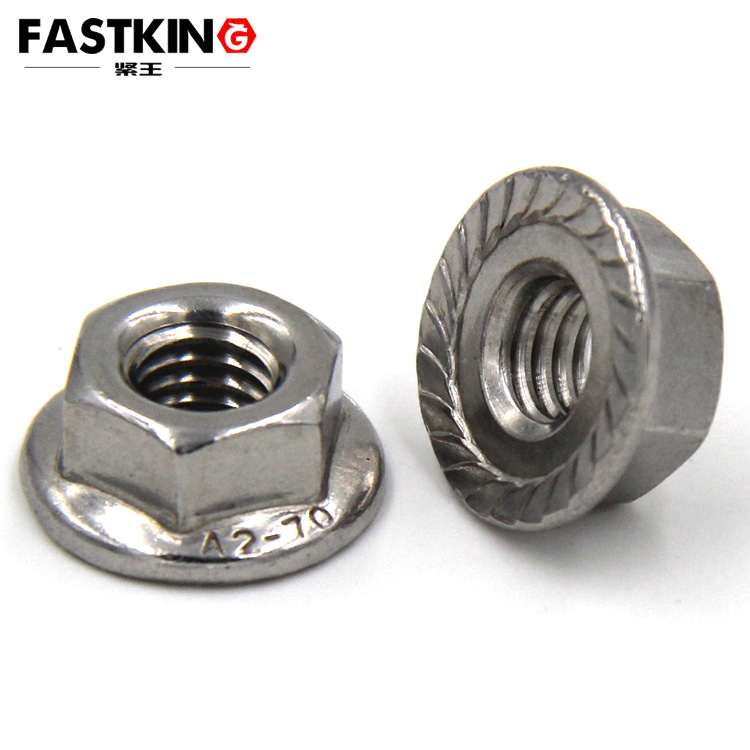

In addition, its hexagonal head adopts a standard wrench contact surface design, which is compatible with conventional socket wrenches or open-end wrenches, enabling stable force application even in narrow spaces. Some nuts that comply with the DIN6923 standard are also equipped with anti-slip serrations at the bottom of the flange to further enhance anti-loosening performance. In equipment with frequent vibrations (such as automobile engines and motor housings), they can effectively prevent the nut from loosening, ensuring long-term stable connections.
III. Application Fields: Adapting to Strict Requirements of Multiple Industries
With its excellent structure and performance, the flange hexagon nut - DIN6923 has an extremely wide range of application scenarios. In the automotive manufacturing field, it is widely used in the connection of chassis components, suspension systems, and engine peripherals. It can withstand high-frequency vibrations and impacts during vehicle operation while avoiding damage to the thin steel plates of the vehicle body. In the engineering machinery industry, the hydraulic pipelines and frame connection parts of equipment such as excavators and cranes need to withstand high-strength loads. The high tensile strength of the DIN6923 nut and the anti-slip design of the flange can ensure the safe and reliable connection of key parts.
Furthermore, in new energy equipment (such as wind turbine towers and photovoltaic brackets), its weather resistance and anti-loosening characteristics can adapt to complex outdoor environments. In the manufacturing of medical devices, some DIN6923 nuts are made of stainless steel and undergo passivation treatment, which can meet the strict requirements of medical devices for corrosion resistance and hygiene, providing a guarantee for the stable operation of precision instruments.
IV. Materials and Surface Treatment: Adapting to Different Working Conditions
The material selection of DIN6923 flange hexagon nuts should be based on the service environment: Ordinary carbon steel materials (such as 8.8-grade high-strength steel) have relatively low costs and are suitable for heavy-load connections in dry indoor environments. Stainless steel materials (such as A2-70 and A4-80) have excellent acid and alkali resistance as well as anti-rust capabilities, and can be used in outdoor, marine, or chemical scenarios. High-temperature alloy materials, on the other hand, are designed for high-temperature working conditions (such as boilers and furnace equipment) and can maintain stable mechanical properties in environments above 300°C.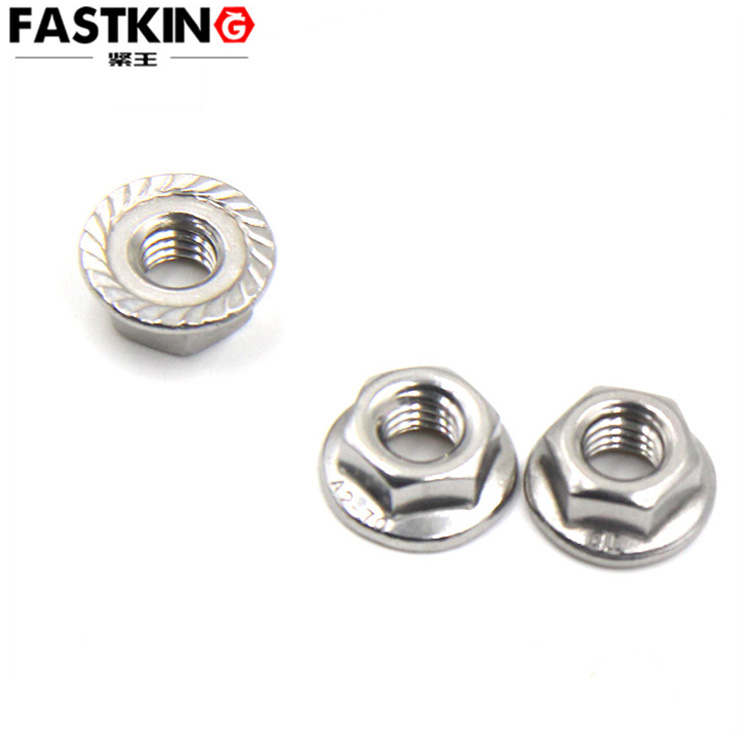

Surface treatment processes also affect the performance of the nut: Hot-dip galvanizing treatment can form a thick zinc layer, greatly improving anti-rust capabilities, and is suitable for outdoor facilities. Dacromet coating has the characteristics of no hydrogen embrittlement risk and strong salt spray resistance, and is often used in parts with high anti-corrosion requirements such as automobile chassis. Phosphating treatment can enhance the friction between the nut and the connected component, and when combined with anti-slip serrations, it can further improve the anti-loosening effect, making it suitable for vibration working conditions.
As a classic product in the field of industrial fastening, the flange hexagon nut - DIN6923, with its standardized design, efficient installation, and reliable performance, has become a preferred solution for solving complex connection needs in multiple industries, providing solid guarantees for the stable operation of equipment and safe production.

